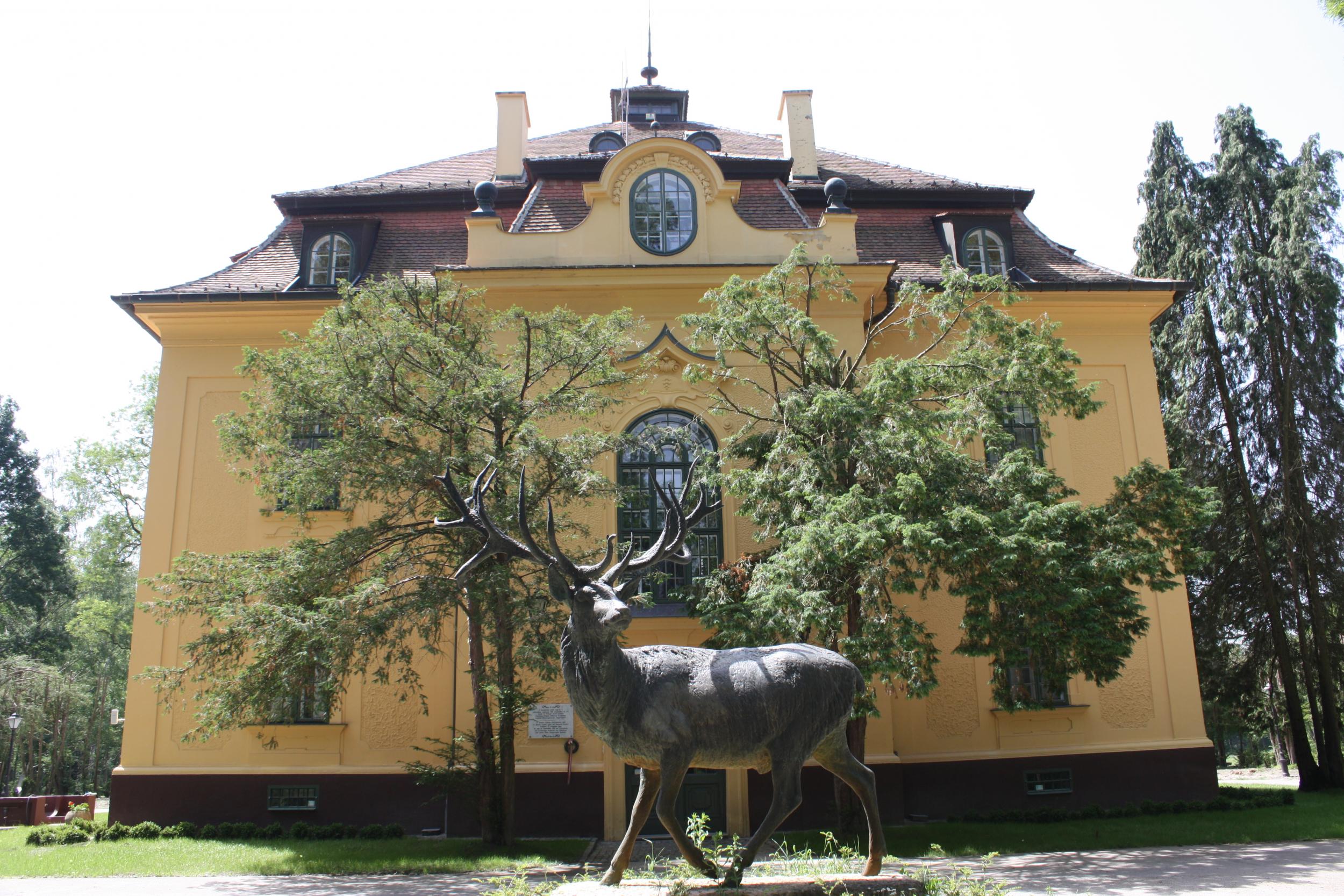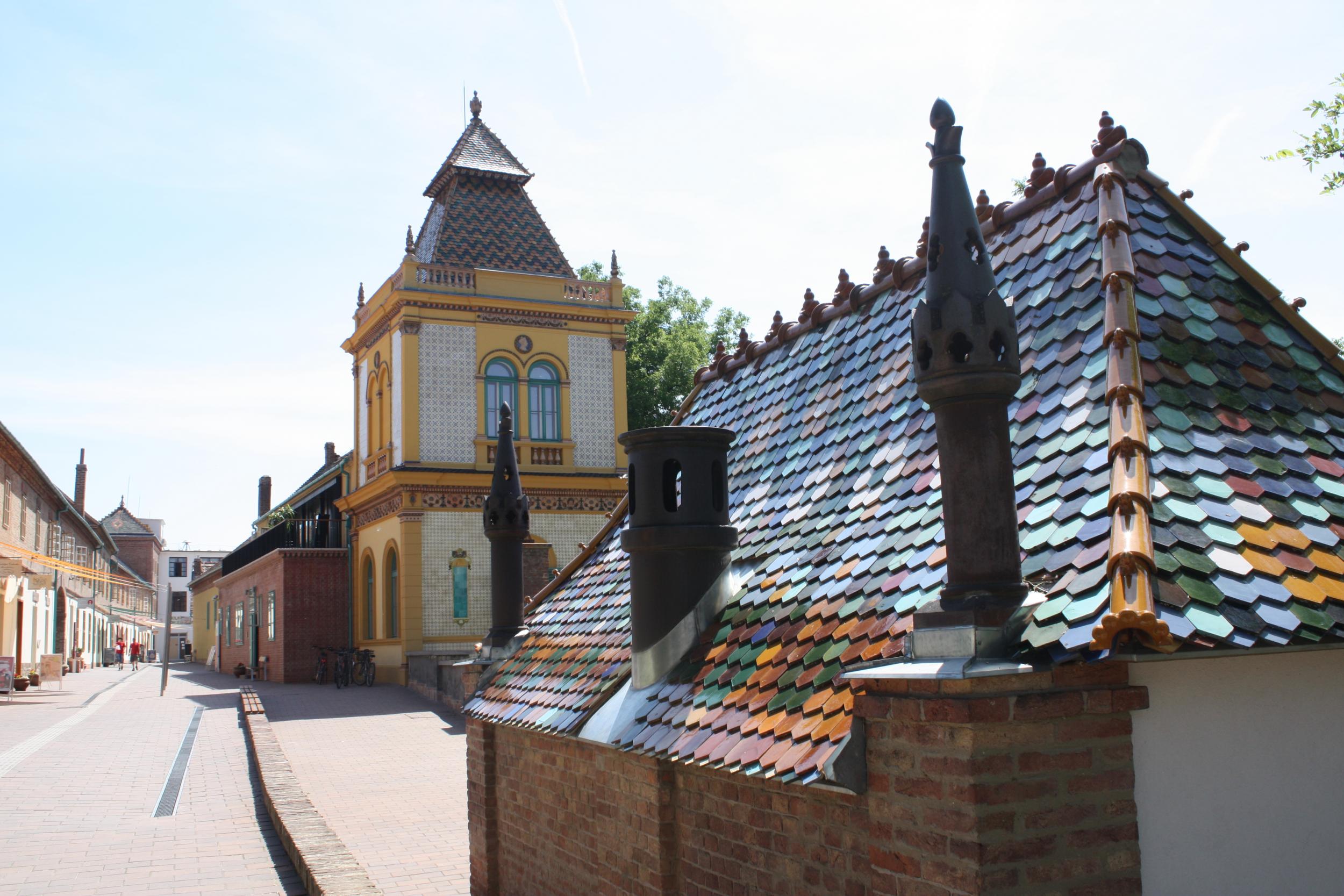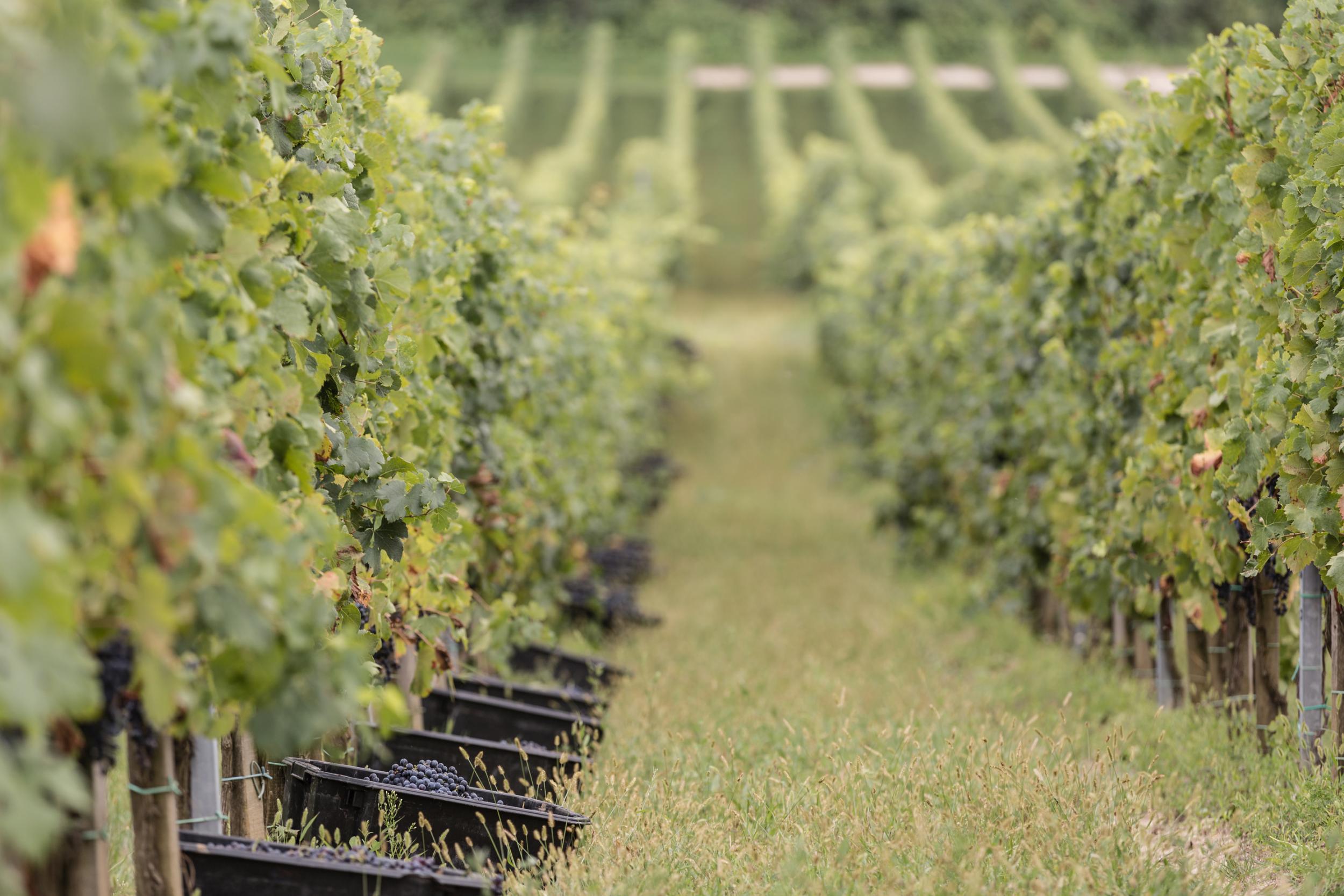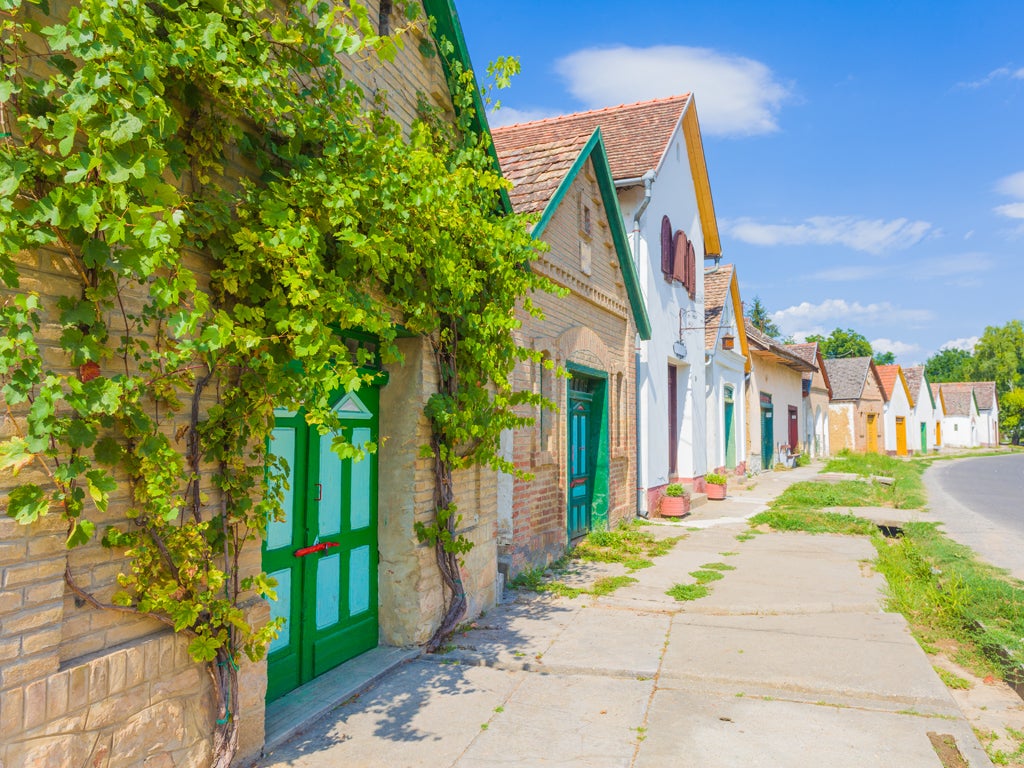The Independent's journalism is supported by our readers. When you purchase through links on our site, we may earn commission.
Hungary: from Communism to conservation
Twenty-five years after Soviet troops finally withdrew from the country, relics of their occupation have found new life as tourist attractions

The afternoon air is full of gently drifting poplar seeds and sunbeams through oak trees. I rock to the train’s rhythms. Railway buffs love the stocky mechanics of this green locomotive, bought from Romania half a century ago and still going strong on its narrow-gauge track, but I’m more interested in what the railway represents: resilience, continuity, work-horse adaptability. This is a steel thread stitching together two ages cleaved by history; an Iron Curtain has fallen, but this track still clickety-clacks.
Twenty-five years ago next month, Soviet occupation finally came to an end in Hungary and these days the symbols of communist power are trophies mounted for tourists. You can stroll among hulking statues of Lenin and Marx neatly arranged in a park outside Budapest, or nose about the old secret police headquarters. But beyond the dead museum pieces are resourceful, living industries, former communist staples that have unpicked themselves from the fabric of the past and re-shaped for a new world.
Take this narrow-gauge railway in Gemenc forest, 100km south of Budapest. Currently it’s making room for my pampered western backside, but under communism it would have been loaded with wood and workers, heaving its way through the soggy undergrowth. Charming it might be, but this train was originally just a practical solution to a practical problem – a means to extract logs from a flood-prone forest by the Danube.
Clickety-clack. Ahead of us, a procession of four red deer emerges, stopping to stare at our lethargic approach before trotting across the track and disappearing into the trees again. Deer like this were once the sport of prominent communist party officials, who were rewarded for their loyalty with the exclusive right to hunt here. The landscape and its wildlife were there to serve the cause; like the train, everything had to pull its weight.

Today a different cause is being served. Some logging and hunting still take place in Gemenc forest, but the driving force now is conservation and promotion of enjoyment of the natural world. Over 56,000 tourists a year ride this train through stands of willow, English oak and narrow-leafed ash – trees with names rather than uses. A former workers’ house at Pörböly, the railway’s start point, has been converted into an eco-centre with an interactive forestry exhibition and a forestry school for local pupils. Visitors walk the forest trails, take kayaking tours on waterways that harbour otter and beaver, and follow guides into autumn’s gloam to hear the bellow of mating stags.
The new cause is a challenge, thanks to the Gemenc’s landscape. Head of Forestry Péter Csontos meets me at Lassi station, a quarter of the way along the 30km line, to show me an extraordinary exhibition of photos in a whitewashed forester’s cottage. In one image, a stag swims across a stretch of deep water, its antlers like billowing sails. In another, scores of deer stand marooned on a lonely island. “Every few years the forest floods badly,” Péter explains. “We set up feeding stations on hilltops so animals can wait in safety until the water drops.” For up to a fortnight, deer dine with wild boar and foxes rub shoulders with badgers. It’s a modern-day Noah’s ark of forest wildlife.
The train has gone, but we climb aboard Péter’s 4x4 and drive to Keselyűs, a logging station further north along the line where men busy themselves around tidy stacks of tree trunks. Logging is strictly regulated by the Duna-Dráva National Park, established in 1996, and the aim is to return the forest to as natural a state as possible. When loggers remove black walnut, for example – a wood used for fine furniture and originally imported from America – they replace it with indigenous trees, even though these are less commercially valuable. But what Péter really wants me to see is in a hut next to the logging station.
Inside sits a portly man watching television. Péter nods towards the screen, where three downy-white chicks lie in a nest of moss and silvery twigs. An orange spear of a beak appears and drops a cartwheeling lump into the nest. It’s a dead frog, a lunch offering met with unanimous approval by the chicks, who tug and squabble for their share.
“Black storks, just a week old,” Péter says proudly. The mother has a strange taste in nesting sites; faced with a forest 10km long and 5km wide, she’s chosen to set up home 100m from the logging station. “Last year, her chicks died when she left to hunt. This year, we’re monitoring the brood round the clock.” Such diligent management is allowing the forest and its wildlife to flourish. Black storks shun all but the healthiest wetland habitats, yet 55 pairs have chosen to live in the Gemenc, more than anywhere else in the country. The red flag might have gone, but they keep the black stork flying here.
Next day, I drive 30km south-west to Pécs, a university city renowned not only for its Ottoman architecture but the striking porcelain that’s made here. Although you wouldn’t hear that from István Komor. “Zsolnay porcelain is famous only in Pécs”, says the Managing Director of the Zsolnay Heritage Quarter as he greets me glumly at the gate; I sense that István tends towards a “glass-half-empty” view of the world.

Zsolnay might not be an international household name but at its height the factory was a Hungarian institution, and only the most myopic visitor to Budapest can miss its work. Landmark buildings such as Matthias Church and the Great Market Hall blaze with multi-coloured Zsolnay roof tiles, while many shops sell the curious metallic-sheened ceramics synonymous with the company. And, like Gemenc forest, the Zsolnay factory has ridden some radical changes in recent years.
It was founded in 1865 by a wealthy aristocrat, but the company could never be accused of being lofty or traditional. Vilmos Zsolnay was a nobleman moulded by reformist spirit, eager to push boundaries. He gathered artists and chemists to his factory, and challenged them to reinvent the world of pottery: to come up with new glazes, try new types of kiln, and to fire the kilns with different materials at different temperatures.
Some of the results of this experimentation can be seen in the Golden Age of Zsolnay exhibition, displayed in what was originally Vilmos’s house. The taciturn István points to a turquoise pot with an uneven, dappled surface. “Vilmos loved that finish – he called it the Tiger Effect. It was discovered accidentally when a worker dropped petroleum in a glaze mixture.” Elsewhere are early examples of the shimmering “eosin” technique, unveiled at Budapest’s Great Exhibition of 1896, and named after Eos – Greek goddess of dawn – because the first glaze was the captivating red of a morning sky. The iridescence is achieved by adding metal oxides, but the precise recipe is a closely guarded secret.

In its pomp, the Zsolnay factory employed 2,000 workers. And after nationalisation in 1948, it continued to thrive, although the focus switched to more lumpen communist priorities – industrial insulators, pipework and utilitarian tableware. Then came the crash, as tastes changed and cheap imports from the East flooded the market. From the 1980s the European porcelain industry spiralled in steep decline; just 200 workers remain at the Pécs factory in 2016.
Yet today the site is thriving, having been revived as an arts quarter during the run-up to Pécs’ year as Capital of Culture in 2010. It’s the perfect backdrop to a celebration of creativity. Vilmos, his workers and their families all lived in the grounds, and they took clear pride in making this a quirky and characterful spot to be. All around are vibrant wall tiles and sculpted fountains. A kiln chimney is decorated in diamond patterns and balustrades are set with polished studs like gemstones. “Yes, it’s quite cheerful”, observes István morosely.
We browse a second collection of porcelain in a yellow villa that once belonged to Vilmos’s daughter, Júlia. The home of his other daughter, Teréz, is now a puppet theatre, and the Pyrogranite Yard hosts outdoor performances of music and dance. Children can try porcelain painting or watch sweets being made in a former worker’s residence. This seems to me a tremendous success story, a story of an area rejuvenated, of Zsolnay re-shaped for the 21st century, and as I say so to István he betrays the flicker of a smile.
I finish the day on the terrace of Gere Winery in Villány, a glass of 2008 cabernet franc in hand as I watch paragliders make lazy circles above the vines of Devil’s Valley. If you want to taste a way in which Hungary has changed in 25 years, then try its wine. “When I was growing up, beer was bitter and wine was sour”, observes Tamás Fröhlich, the winery’s 34-year-old sommelier. “It wasn’t until I had a Bull’s Blood from Szekszárd in 1999 that I realised it could be any other way.”

During the 1980s, Bull’s Blood came to represent the death of quality wine production behind the Iron Curtain. All across the country, farms were collectivised and forced to squeeze as much as possible from the land. And when you squeeze a vineyard, you get vinegar.
But the reputation of Hungarian wine has made a Lazarus-like resurrection in the last few years. There are now over 30 winemakers in Villány, and many have travelled abroad to soak up valuable lost knowledge. In 2005, the region launched an origin-protected scheme. Tamás tells me they plant vines only on the sunny hillsides, ignoring the flat lands used under communism, and that grapes are harvested by hand.

Decanter magazine recently described Villány as the spiritual home of cabernet franc, and certainly the glass Tamás has given me is fruity and tannic. It’s the work of Attila Gere, one of the country’s leading vintners, who founded his winery here in the 1990s. Cut Attila and he’ll bleed grape juice; the Gere family tree is heavy with wine makers, seven generations of them spanning 150 years. But communism came, and Attila’s grandfather and father reluctantly abandoned their calling. Attila is repairing the family line, reviving and reshaping for a new world. Just like the people of Gemenc and Zsolnay. As the light fades, I raise a quiet toast to those who are stitching together ages cleaved by history: may they keep on clickety-clacking.
Travel essentials
Adrian travelled courtesy of specialist tour operator Hungary4U (020 8241 1297; hungary4u.co.uk). A week-long trip to Hungary – including two nights in the three-star Danubius Palatinus City Centre (danubiushotels.com) in Pécs, one night in the four-star Crocus Gere Wine and Spa Hotel (crocus-hotel.gere.hu) in Villány, three nights in the five-star Corinthia Hotel Budapest (corinthia.com), car hire with Fox Autorent (foxautorent.com) and return flights from London – costs from £800 per person.
More information
Adrian Phillips is author of the Bradt guide to Hungary. For a 25 per cent discount, enter code HUNGARY at checkout.
Join our commenting forum
Join thought-provoking conversations, follow other Independent readers and see their replies
Comments
Bookmark popover
Removed from bookmarks